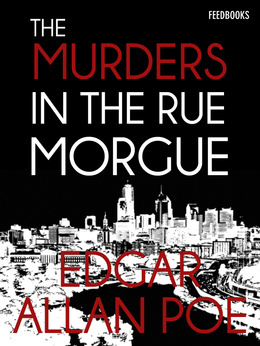 The Murders in the Rue Morgue by Edgar Allan Poe
The Murders in the Rue Morgue by Edgar Allan Poe Goodreads|Amazon
"The Murders in the Rue Morgue" is a short story by Edgar Allan Poe published in Graham's Magazine in 1841. It has been claimed as the first detective story; Poe referred to it as one of his "tales of ratiocination". Similar works predate Poe's stories, including Das Fräulein von Scuderi (1819) by E.T.A. Hoffmann and Zadig (1748) by Voltaire.
C. Auguste Dupin is a man in Paris who solves the mysterious brutal murder of two women. Numerous witnesses heard a suspect, though no one agrees on what language was spoken. At the murder scene, Dupin finds a hair that does not appear to be human.
As the first true detective in fiction, the Dupin character established many literary devices which would be used in future fictional detectives including Sherlock Holmes and Hercule Poirot. Many later characters, for example, follow Poe's model of the brilliant detective, his personal friend who serves as narrator, and the final revelation being presented before the reasoning that leads up to it. Dupin himself reappears in "The Mystery of Marie Roget" and "The Purloined Letter".
The syntax in the first few pages of The Murders in the Rue Morgue is very confusing. You must make inferences for why Poe feels the need to discuss the difference between chess and checker players; to many of us it doesn't make a bloody difference. Poe uses it as a subtle tap on the shoulder in the right direction. By using a mellow example of analytical thinking in checkers he is explaining that Dupin thinks already on a much higher level. His words are meant to makes us feel confused in why checkers and chess strategies are involved in a grisly murder. The syntax makes a full circle at the end of the book showing us why this introduction is so needed to understand the mechanics of Dupin's logic.

No comments:
Post a Comment